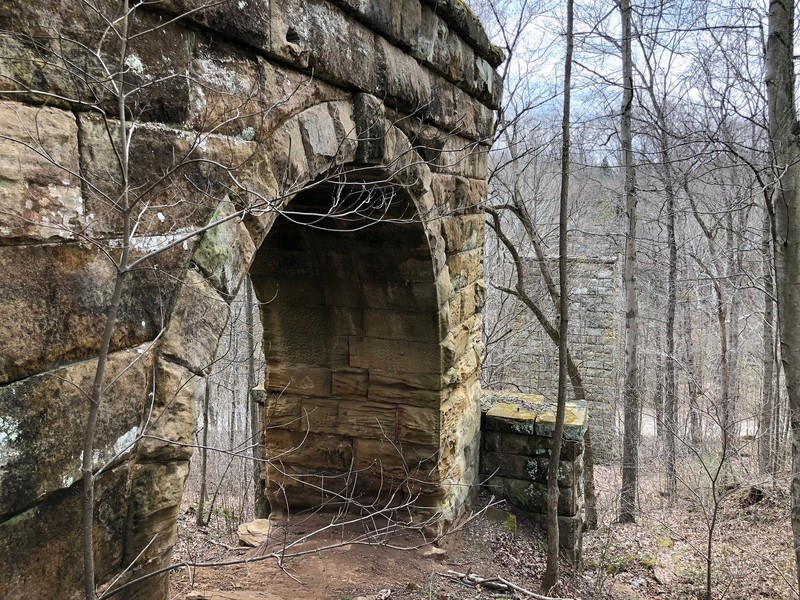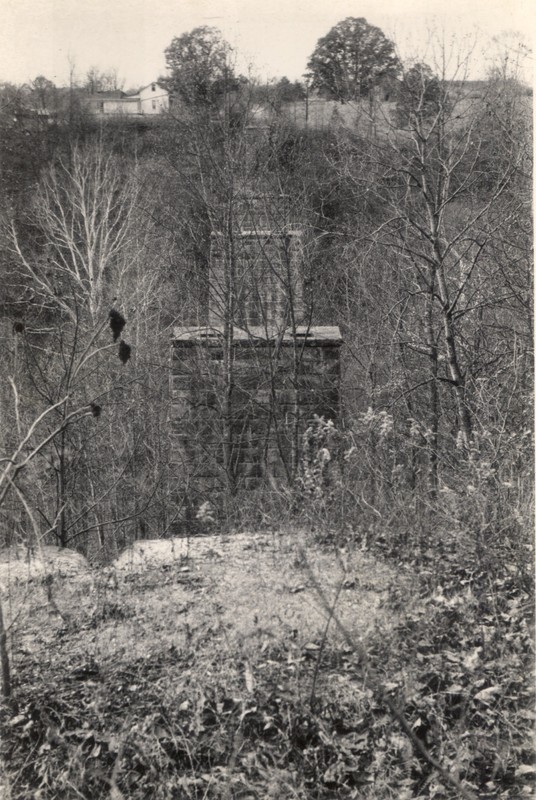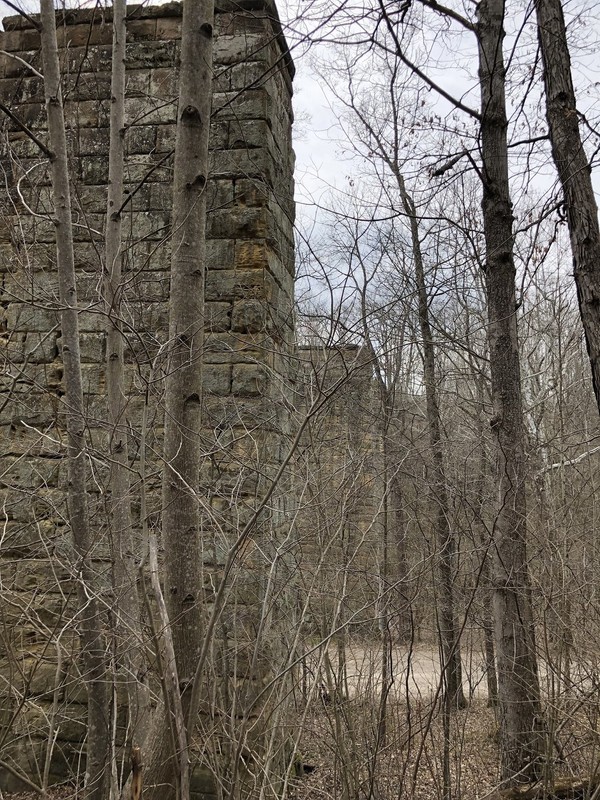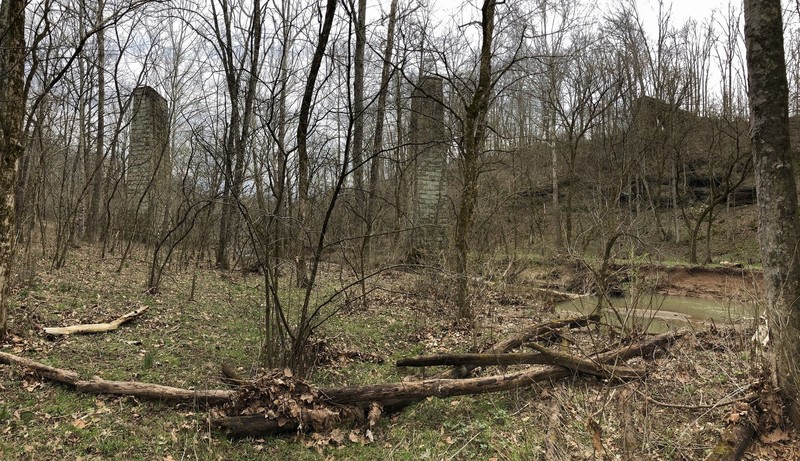Dunbar Piers, Marietta and Cincinnati Railroad Bridge
Introduction
Text-to-speech Audio
The Dunbar Piers are all that remain of a bridge built and used by the Marietta and Cincinnati Railroad in the mid 1800s. Irish and German immigrants carved sandstone taken from the surrounding hills to build the piers, which supported a wooden trestle that has since burned and rotted away. The Marietta and Cincinnati Railroad built the bridge across a deep valley in the 1860s as part of a line that ran from Marietta to Athens and eventually on to Cincinnati. The Baltimore and Ohio Railroad eventually took over the Marietta and Cincinnati lines and the Dunbar Piers saw sporadic use until they were finally abandoned in 1916. Today three piers and two abutments survive.
Images
Dunbar Piers April 6, 2018, looking west from stone arch on eastern abutment

Dunbar Piers circa 1950. Courtesy of the Southeast Ohio History Center

Dunbar Piers April 6, 2018, looking west

Dunbar Piers April 6, 2018, eastern abutment and piers

Backstory and Context
Text-to-speech Audio
Incorporated in 1845 as the Belpre and Cincinnati, the Marietta and
Cincinnati Railroad began constructing a line from Marietta through
Southeastern Ohio in the 1850s with the goal of connecting Marietta with
Cincinnati. The railroad's founders envisioned a line that would carry
passengers
and freight across the lower portion of Ohio, as well as connect to the
Baltimore and Ohio and larger railroads to the east. The
Appalachian Foothills posed a challenge to early railroad engineers,
who were forced to design and construct many tunnels, trestles, and
culverts in order to maintain the railroad's grade. Despite financial
setbacks, the Marietta and Cincinnati railroad accomplished its goal;
the first train ran the complete distance between Cincinnati and
Marietta in 1857.
The first portion of the Marietta and Cincinnati Railroad's line
connected Cincinnati to Chillicothe and opened in 1855. In April of 1856 the line opened as far as Athens. Completing the
section that connected Athens to Marietta was more difficult, and it took another year to open
to regular rail traffic. The company continued to improve the original line. During the early 1860s, workers constructed the Dunbar Piers to hold a bridge that would span one of the widest and deepest valleys on the route. The bridge replaced an earlier switchback, which had forced trains to slow as they went down one side of the valley then up the other.
In 1868, the Baltimore and Ohio Railroad gained enough shares to control the Marietta and Cincinnati. In 1889, the B&O assumed outright control over the line then dissolved the M&C. Meanwhile, in 1871, the Baltimore Short-line Company formed with the purpose of laying a railway from Belpre to Athens. In 1874, the company completed the short line, rendering the old line from Marietta to Canaanville redundant.1 The B&O abandoned the costly to maintain line shortly thereafter. The Toledo & Ohio Central Extension claimed the unused line in 1884, and operated until 1893, when the company went into receivership.2
Rail traffic again passed over the Dunbar Piers in the early 1900s, until last train traversed the valley in 1916. After the section of line west of Vincent was abandoned for the last time, the Marietta and Vincent Railroad operated the old Marietta and Cincinnati line from Moore's Junction to Vincent, until it too ceased operation in 1924.
Sources
1. History of the Hocking Valley, Ohio. Chicago, IL. Inter-State Publishing Co., 1883. 137-138.
2. Andrews, Martin R. (Editor). History of Marietta and Washington County, and Representative Citizens.
Chicago, Il. Biographical Pub. Co. 1902. 274.
Byers, David E. The Federal Valley Railroad Company & its Ancestors. Westerville, OH. Integrity Press, 2000.
"Program on Old Rail Line, Huge Piers." Marietta Times. October 3, 2013.
